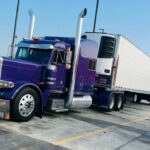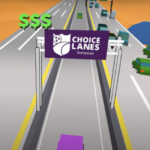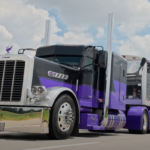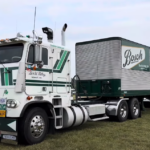Gavin Newsom, the Governor of California, believes that 30 years from now, we will question why we ever permitted human drivers to operate vehicles on the road. He shared this perspective with journalists on October 29th while visiting a Tesla car manufacturing facility in Shanghai, China, on the last day of his trip to the country.
“Autonomy is the future,” California’s Democratic leader said. “I think we’re going to look back in 20, 30 years and go, ‘Why were we allowed to drive and allow 30,000-plus Americans to die every single year in accidents?’ ”
Newsom’s remarks followed closely on the heels of an incident involving Cruise, an autonomous car company, which had its commercial robotaxi service suspended by state regulators less than a week ago. The suspension came about because the company was accused of concealing information regarding a collision that caused serious harm to a pedestrian. Newsom affirmed his full support for the Department of Motor Vehicles’ move to revoke Cruise’s authorization to operate robotaxis in San Francisco.
“We have a very strong regulatory market. Just ask folks at Cruise,” he said. “We don’t want to cede the future to other countries, other states, but at the same time want to keep people safe.”
Governor Gavin Newsom has found himself in the midst of a conflict between two of his major supporters: technology companies and labor unions. Back in September, he took the side of tech firms and opposed the unions when he vetoed a bill that aimed to prohibit autonomous trucks.
While Tesla’s vehicles offer some autonomous driving capabilities, the company’s claims about full self-driving have faced scrutiny from the Department of Motor Vehicles (DMV). Last year, Newsom signed a law effectively barring Tesla from advertising its cars as “Full Self-Driving.”
During his recent visit to the Tesla factory, Newsom did not comment specifically on Tesla’s self-driving technology. However, he did express his expectation that self-driving technology would become much more common. He also mentioned his anticipation of flying cars becoming a reality “soon” but did not provide a specific timeline, noting that he had experienced a prototype of a flying taxi created by the California company Joby Aviation.
While at the Tesla factory, Newsom observed the manufacturing process, where workers assembled cars, connected body and chassis, installed windows, doors, wheels, and drove completed vehicles off the assembly line. Song Gang, the vice president of manufacturing for the Shanghai factory, guided the governor, explaining how Tesla improved assembly line efficiency. Tesla claims that the facility is one of the world’s most productive electric vehicle factories.
Electric vehicles play a central role in Newsom’s clean energy initiatives. In 2020, he issued an executive order to prohibit the sale of new gasoline-powered cars by 2035, which necessitates a substantial shift toward Californian consumers adopting electric vehicles. The California Air Resources Board, responsible for regulating car emissions, finalized the policy’s details last year. It makes an exception for plug-in hybrids that use a combination of gasoline and electric power. Electric vehicles were also a focal point of Newsom’s week-long visit to China, which focused on combating climate change.
Regarding criticism he received for not addressing human rights concerns in China during his trip, Newsom mentioned that he did raise these concerns in meetings with top Chinese government officials. When asked about concerns regarding Tesla sourcing materials from a region in China with reports of widespread forced labor, he stated that he wasn’t well-informed enough about the issue to form an opinion.
During his visit to the factory, Newsom test-drove an updated version of Tesla’s Model 3, which is not yet available in the United States. This marked the second time during his week-long trip to China that he test-drove a vehicle, following a hybrid with self-driving and floating capabilities at an electric bus depot in Shenzhen.
Newsom, who typically relies on his security detail for transportation, clearly enjoyed the opportunity to test out these new vehicles. As he drove the shiny red Tesla past the line of cameras capturing his visit, he slowed down and flashed a broad smile.
“See you in Shanghai,” he called out the window.





